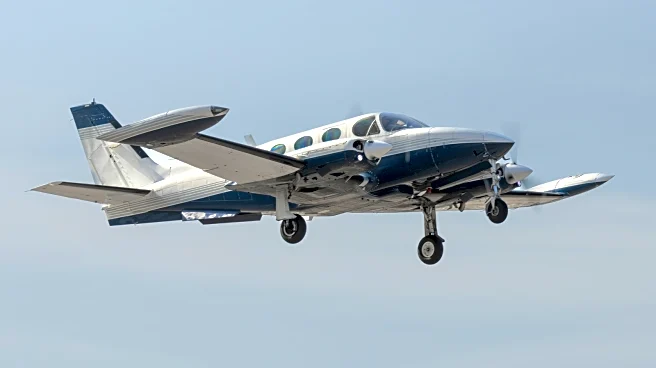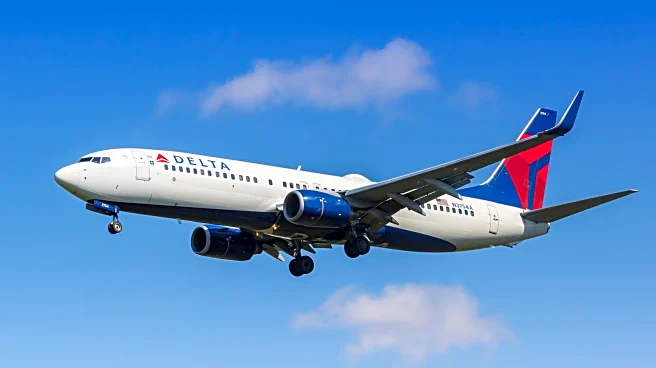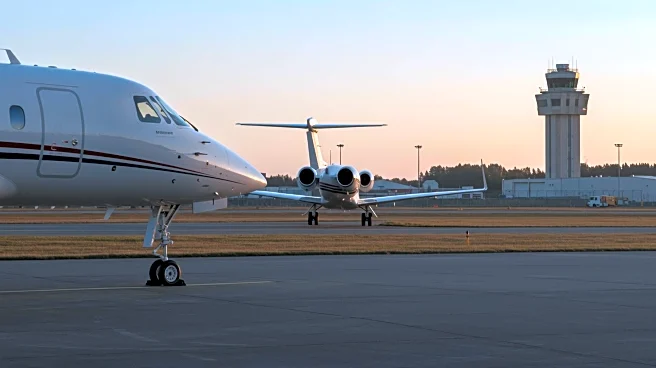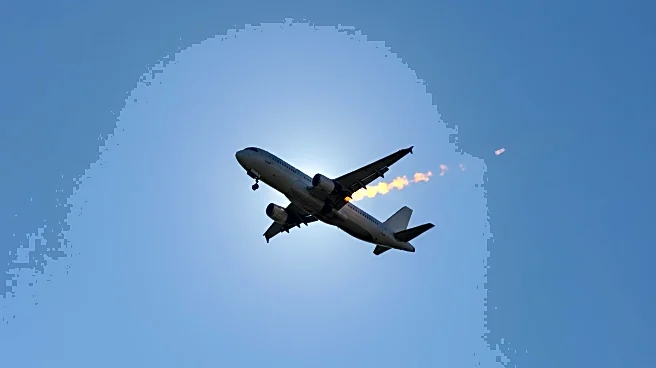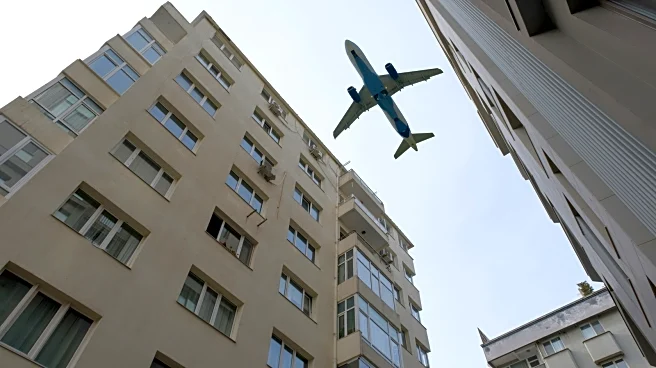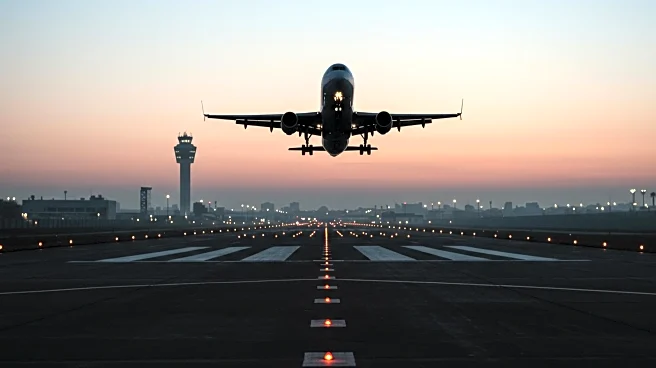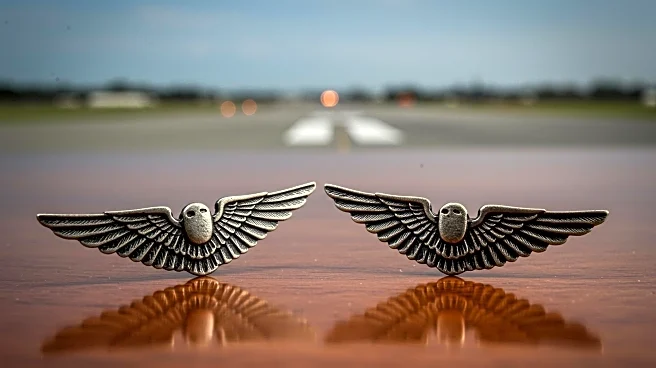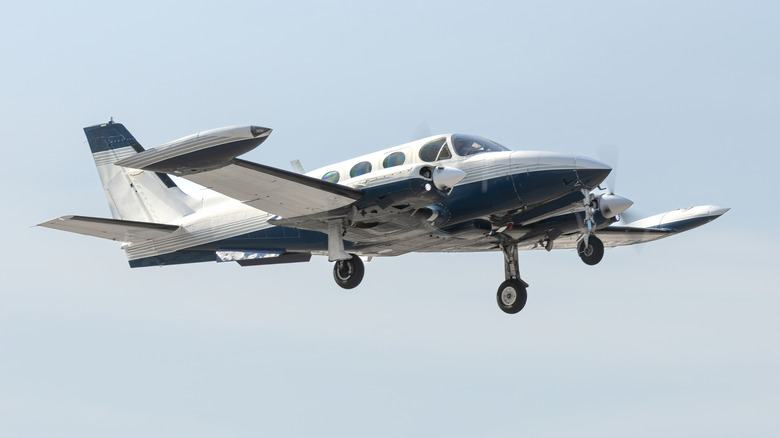
At first glance, a twin-engine aircraft looks a whole lot safer than a single-engine one. After all, if you lose an engine, you still have another to keep you flying in the air, right? This isn't exactly true: For a twin-engine aircraft, losing an engine during takeoff can actually be a whole lot more dangerous than a single-engine airplane losing one.
The reason relates to something called asymmetric thrust. When an engine fails during a twin-engine plane's takeoff, it is suddenly thrust into a highly
unstable state. With the remaining functioning engine producing full power on one wing, the aircraft naturally begins to roll toward the failed engine. Combine this with the sudden loss of lift from the impacted wing, and you get an immediate and dangerous imbalance. There is still a chance an airplane can glide to safety after losing an engine, but it requires the pilot to be able to handle a series of tough maneuvers under a lot of pressure. If the pilot doesn't know how to correct things instantly, the plane will likely end up spinning out, stalling, or worse.
Read more: 10 Airplanes That Managed To Fly With Staggeringly Low Horsepower
Twin-Engine Pilots Follow A Certain Procedure When An Engine Fails
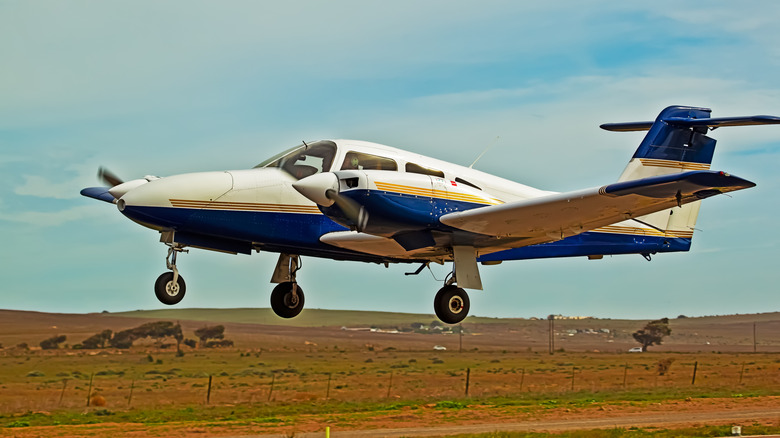
If one of a plane's two engines fails during takeoff, the pilot has to act with speed and precision to avoid a crash. First, they maintain the aircraft's best single-engine climb speed, which is usually indicated by a blue line on the reader measuring the plane's velocity. This helps the pilot maintain control, so they can start executing the standard emergency procedure.
That involves identifying which engine is out, lowering the nose slightly, and counteracting the force of the working engine rolling the plane to one side. If they cannot restart the failed engine, pilots may also have to "feather" the functioning engine, which means they rotate the propeller blades so that they are parallel with the airflow. Feathering is helpful because it can prevent the propeller from windmilling, which creates more drag and destabilizes the plane.
From there, the pilot has to retract the landing gear, as keeping it extended would add even more drag and make it harder to climb. Once that's done, it's all about setting the working engine to maximum continuous power to keep everything moving steady. It sounds straightforward, but remember: All of this must be done rapidly.
Pilots Receive Training To Prepare For An Engine Failure
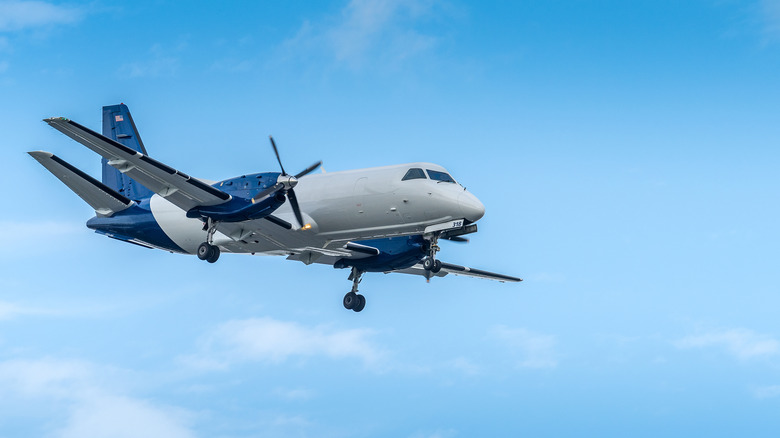
Although flight simulators originated in the late 1920s, they have gotten exponentially more sophisticated and realistic in the decades that followed. Pilots use these simulators to practice for an engine failure before even getting in the aircraft, along with other mechanical issues they may experience mid-flight. Certain aspects of the emergency procedure can also be practiced at a safe distance in the air or on the ground.
Still, there's no guarantee a light twin can safely continue takeoff and climb after engine failure, even under ideal conditions. As such, practicing this scenario in the air needs to be done very carefully and only when the aircraft is traveling faster than the safe single engine airspeed. Instructors also have to be careful not to overwork the engines during training and restrict the number of times they are shut off during lessons. This helps make sure that a training exercise to simulate a failed engine doesn't turn into the real deal. Ultimately, this instruction helps twin-engine pilots have a better shot at landing safely on the ground again should they ever end up in this difficult scenario in the first place.
Want the latest in tech and auto trends? Subscribe to our free newsletter for the latest headlines, expert guides, and how-to tips, one email at a time.
Read the original article on SlashGear.
